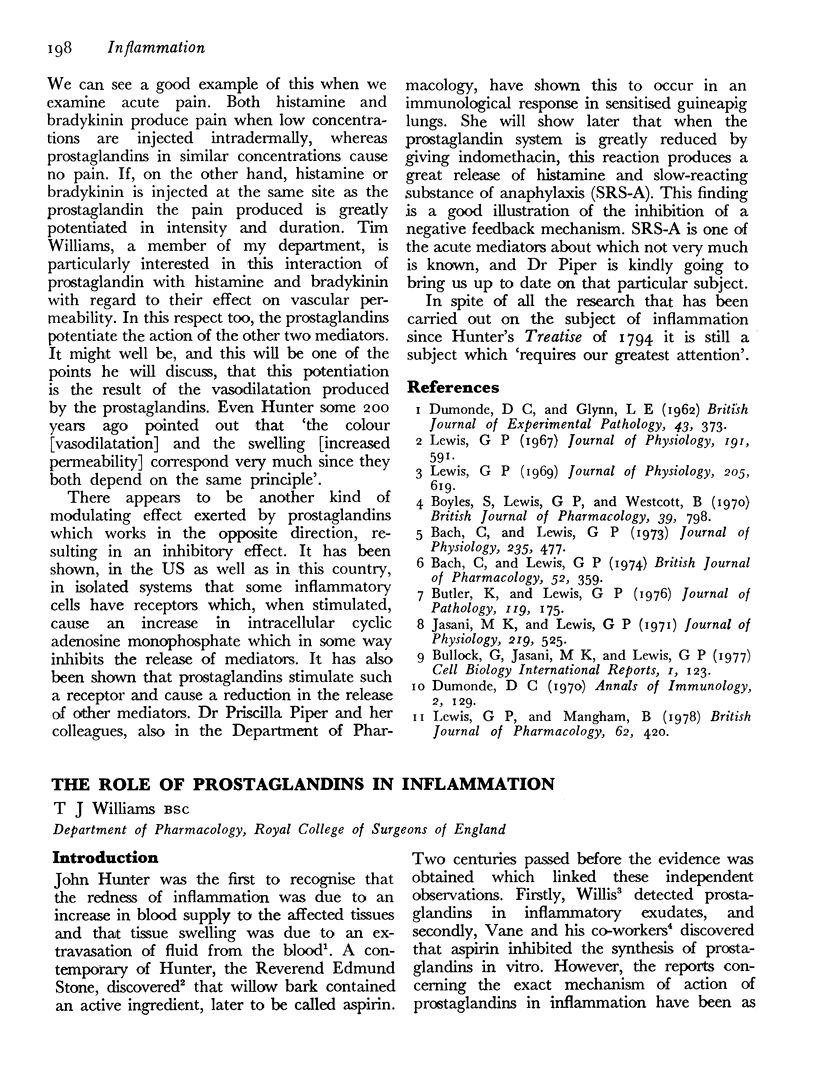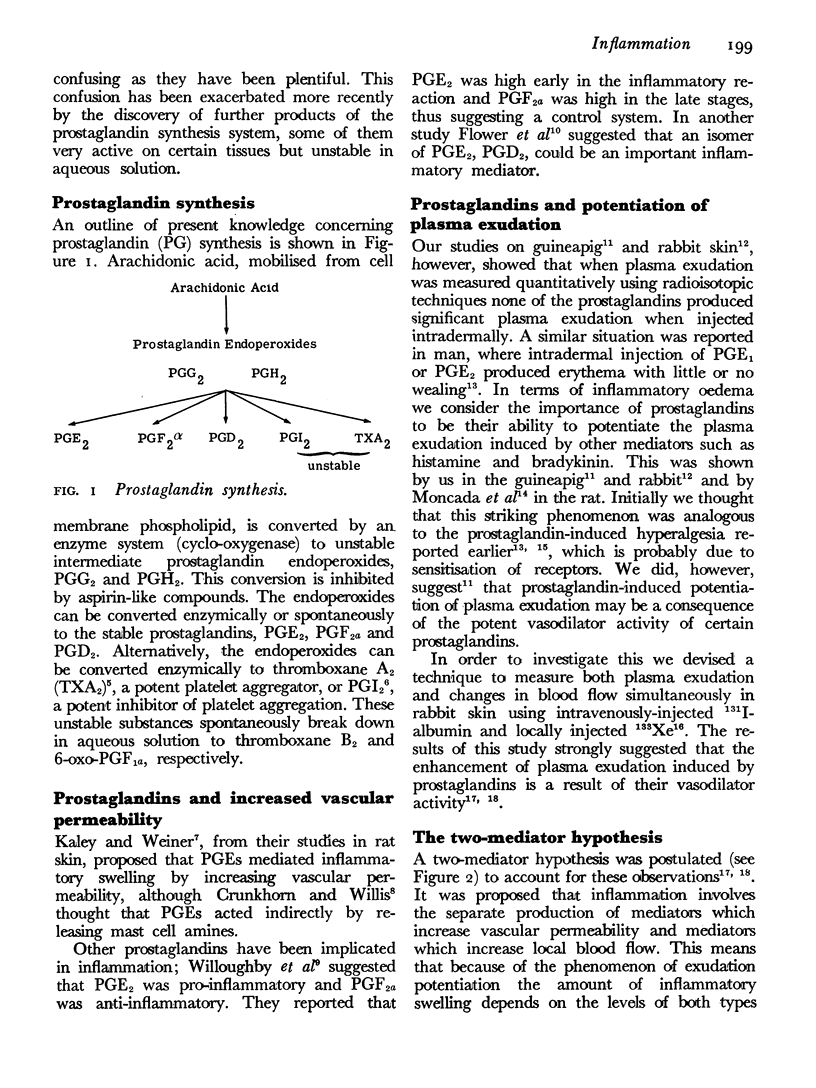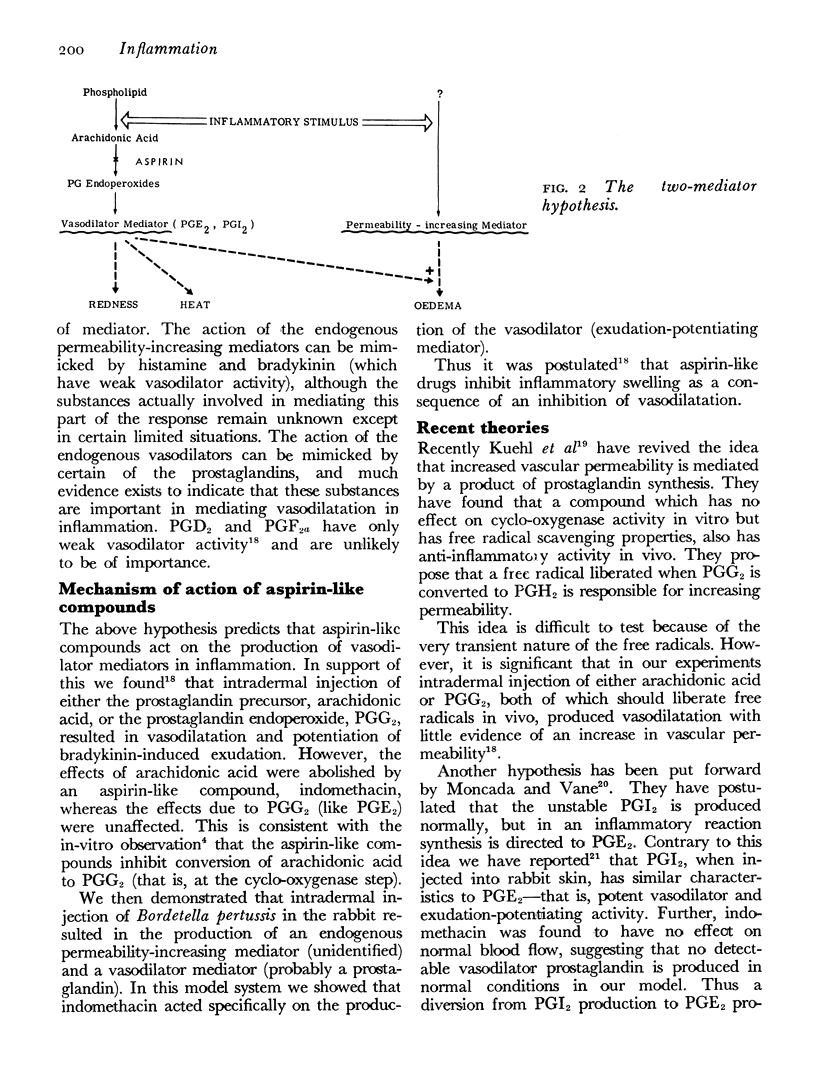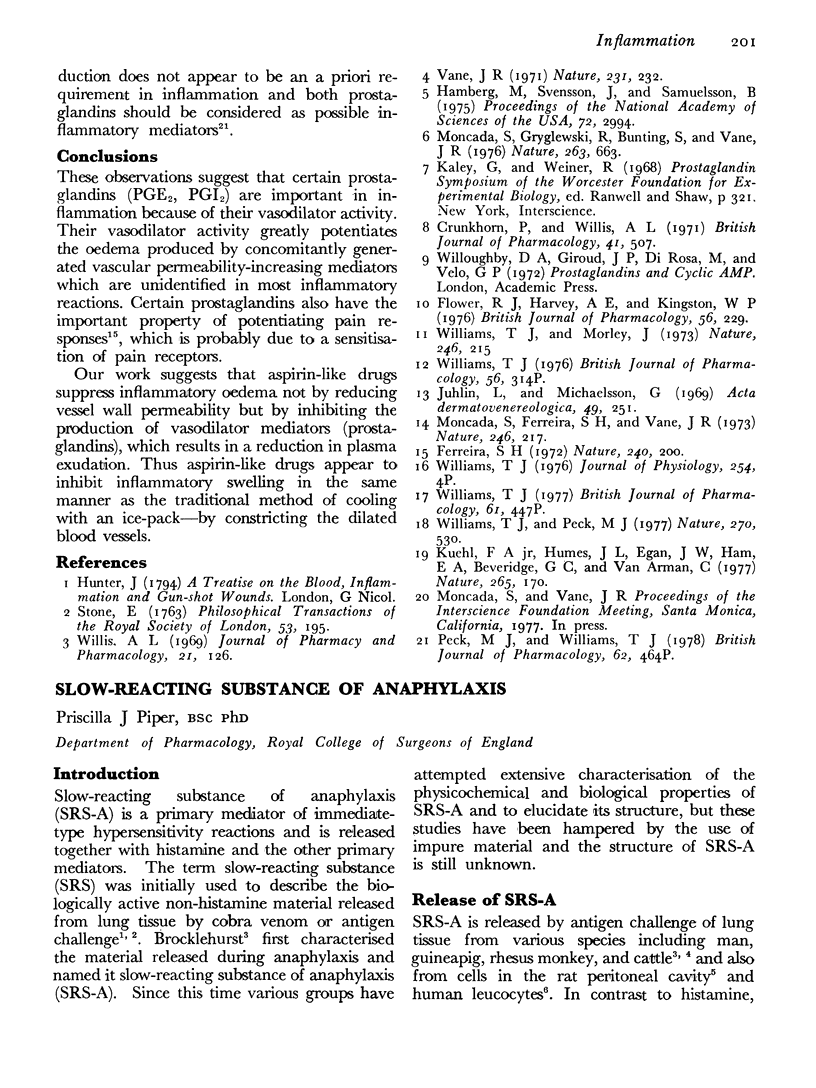Abstract
Our work suggests that aspirin-like drugs suppress inflammatory oedema not by reducing vessel wall permeability but by inhibiting the production of vasodilator mediators (prostaglandins), which results in a reduction in plasma exudation. Thus aspirin-like drugs appear to inhibit inflammatory swelling in the same manner as the traditional method of cooling with an ice-pack--by constricting the dilated blood vessels.
Full text
PDF



Selected References
These references are in PubMed. This may not be the complete list of references from this article.
- Crunkhorn P., Willis A. L. Interaction between prostaglandins E and F given intradermally in the rat. Br J Pharmacol. 1971 Mar;41(3):507–512. doi: 10.1111/j.1476-5381.1971.tb08048.x. [DOI] [PMC free article] [PubMed] [Google Scholar]
- Ferreira S. H. Prostaglandins, aspirin-like drugs and analgesia. Nat New Biol. 1972 Dec 13;240(102):200–203. doi: 10.1038/newbio240200a0. [DOI] [PubMed] [Google Scholar]
- Flower R. J., Harvey E. A., Kingston W. P. Inflammatory effects of prostaglandin D2 in rat and human skin. Br J Pharmacol. 1976 Feb;56(2):229–233. doi: 10.1111/j.1476-5381.1976.tb07446.x. [DOI] [PMC free article] [PubMed] [Google Scholar]
- Hamberg M., Svensson J., Samuelsson B. Thromboxanes: a new group of biologically active compounds derived from prostaglandin endoperoxides. Proc Natl Acad Sci U S A. 1975 Aug;72(8):2994–2998. doi: 10.1073/pnas.72.8.2994. [DOI] [PMC free article] [PubMed] [Google Scholar]
- Juhlin L., Michaëlsson G. Cutaneous vascular reactions to prostaglandins in healthy subjects and in patients with urticaria and atopic dermatitis. Acta Derm Venereol. 1969;49(3):251–261. [PubMed] [Google Scholar]
- Kuehl F. A., Jr, Humes J. L., Egan R. W., Ham E. A., Beveridge G. C., Van Arman C. G. Role of prostaglandin endoperoxide PGG2 in inflammatory processes. Nature. 1977 Jan 13;265(5590):170–173. doi: 10.1038/265170a0. [DOI] [PubMed] [Google Scholar]
- Moncada S., Ferreira S. H., Vane J. R. Prostaglandins, aspirin-like drugs and the oedema of inflammation. Nature. 1973 Nov 23;246(5430):217–219. doi: 10.1038/246217a0. [DOI] [PubMed] [Google Scholar]
- Moncada S., Gryglewski R., Bunting S., Vane J. R. An enzyme isolated from arteries transforms prostaglandin endoperoxides to an unstable substance that inhibits platelet aggregation. Nature. 1976 Oct 21;263(5579):663–665. doi: 10.1038/263663a0. [DOI] [PubMed] [Google Scholar]
- Peck M. J., Williams T. J., Lewis G. P. Prostacyclin (PGI2) potentiates bradykinin-induced plasma exudation in rabbit skin [proceedings]. Br J Pharmacol. 1978 Mar;62(3):464P–465P. [PMC free article] [PubMed] [Google Scholar]
- Williams T. J., Morley J. Prostaglandins as potentiators of increased vascular permeability in inflammation. Nature. 1973 Nov 23;246(5430):215–217. doi: 10.1038/246215a0. [DOI] [PubMed] [Google Scholar]
- Williams T. J., Peck M. J. Role of prostaglandin-mediated vasodilatation in inflammation. Nature. 1977 Dec 8;270(5637):530–532. doi: 10.1038/270530a0. [DOI] [PubMed] [Google Scholar]


